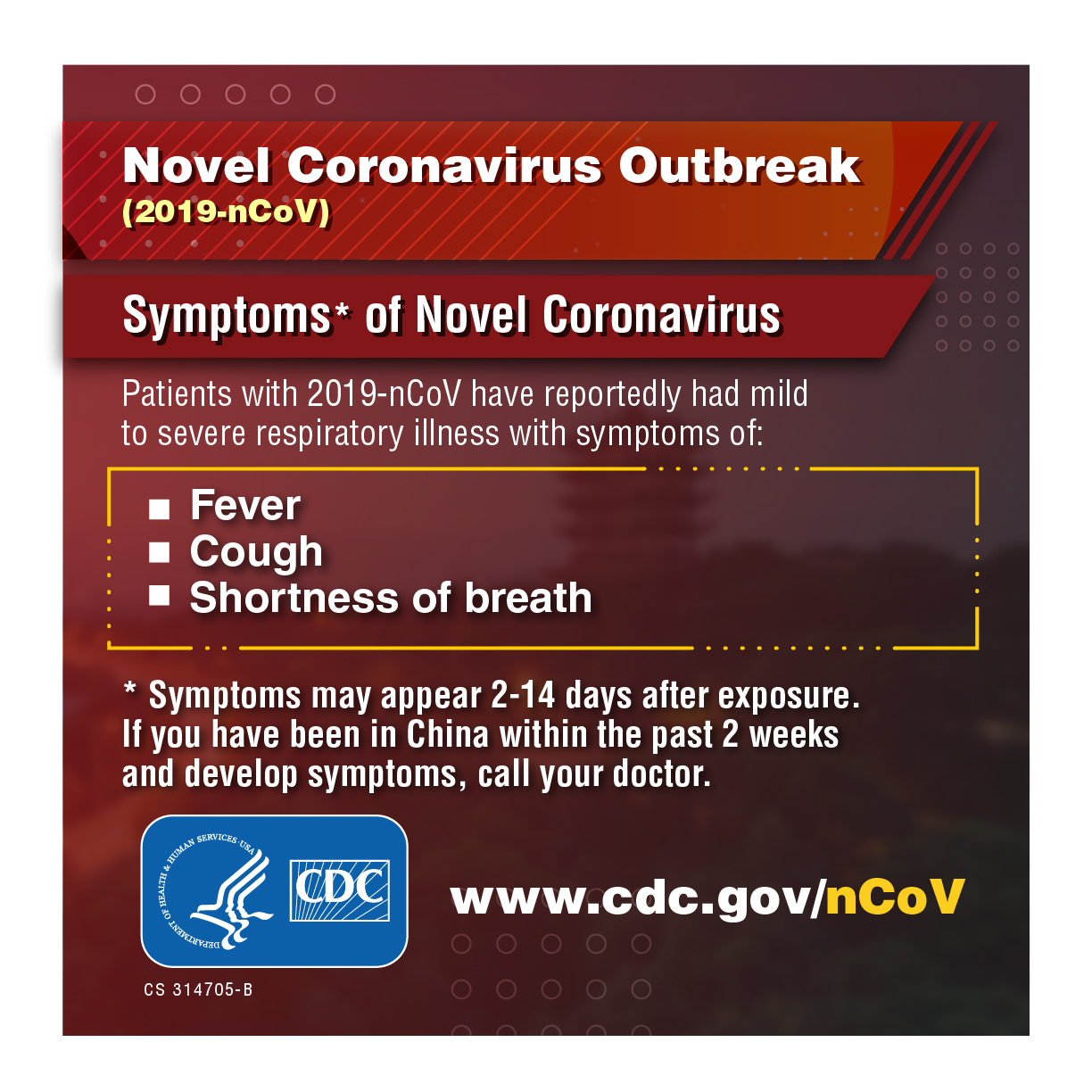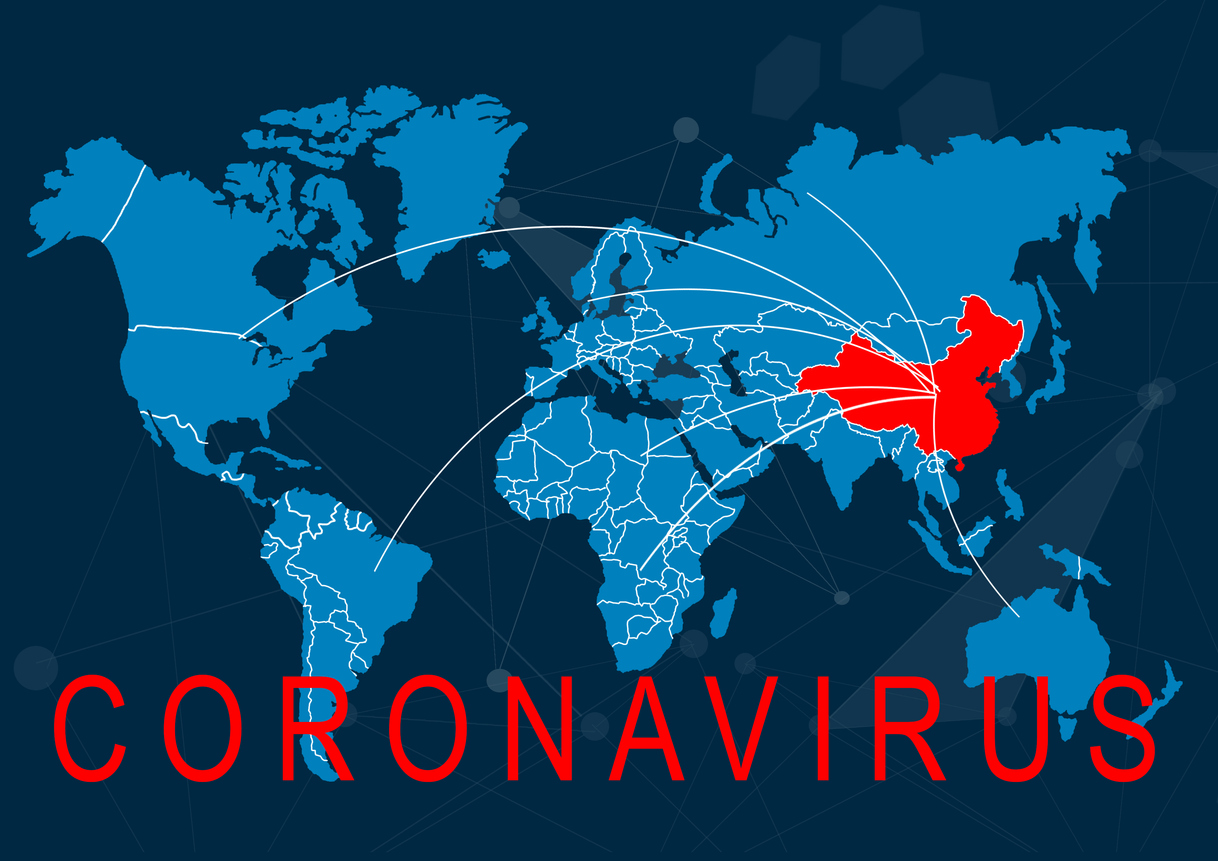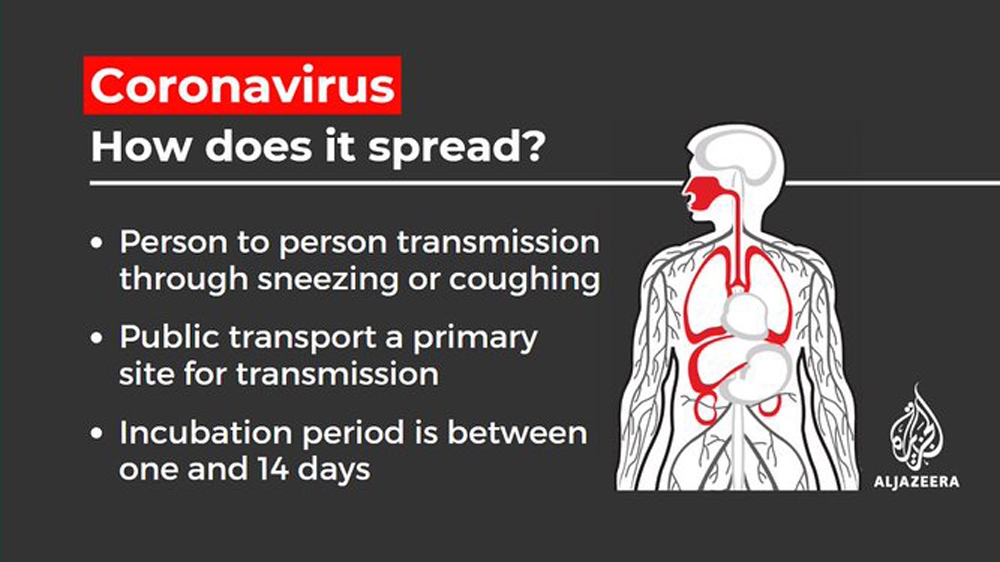WORLDWIDE SITUATION:
Click here for the latest global situation reports from the World Health Organization.
SITUATION IN THE UNITED STATES:
Click here for the latest United States updates from the Centers for Disease Control.
___________________________
Further spreading of the new coronavirus within the United States is “inevitable,” according to federal health officials. However, U.S. federal agencies are taking significant precautions to reduce the severity of the spread. Additionally, scientists are actively researching and testing potential treatments.
On March 11th, the U.S. President instituted travel restrictions, suspending all travel from Europe to the United Statesfor the next 30 days.
___________________________
“In the United States, the National Institutes of Health (NIH) and their collaborators are working on development of candidate vaccines and therapeutics for COVID-19.”
– Centers for Disease Control and Prevention
“The CDC is aggressively responding to the global outbreak of COVID-19 and preparing for the potential of community spread in the United States.”
– Centers for Disease Control and Prevention
“The threat of a pandemic has become very real. But it would be the first pandemic in history that could be controlled. The bottom line is: we are not at the mercy of this virus.”
– World Health Organization Director-General, March 9, 2020
“WHO has been assessing this outbreak around the clock and we are deeply concerned both by the alarming levels of spread and severity, and by the alarming levels of inaction. We have therefore made the assessment that COVID-19 can be characterized as a pandemic.”
– World Health Organization Director-General, March 11, 2020
BACKGROUND ON THE CORONAVIRUS:
What is it, how serious is it, and what does it look like?
What is the coronavirus?
Coronaviruses are respiratory illnesses that can cause mild or moderate symptoms. In rare cases, they can be fatal. Most people will experience one of the more common types of coronavirus at least once during their lifetime, such as certain strains of the common cold.
Currently, there is a new coronavirus being spread that has not been previously identified in humans. This coronavirus was first identified in the Hubei Province in China, and the majority of reported cases have occurred in China.
Where did it come from?
The novel (meaning “new”) coronavirus is believed to have originated from bats. Coronaviruses are categorized as “zoonotic diseases,” meaning they are transmitted between animals and people. Other examples of zoonotic diseasesinclude SARS, which was traced back to civet cats, and MERS, which originated from camels.
It is believed that this particular strain of coronavirus originated from a large animal and seafood market in Wuhan, China.
How serious is it?
The WHO declared COVID-19 a worldwide pandemic on March 11, 2020.
“Pandemic is not a word to use lightly or carelessly. It is a word that, if misused, can cause unreasonable fear, or unjustified acceptance that the fight is over, leading to unnecessary suffering and death… This is the first pandemic caused by a coronavirus.”
What is a pandemic?
According to the WHO, a pandemic is the worldwide spread of a new disease. It signifies the emergence and spread of a new influenza virus from which most people don’t have immunity. Compared to seasonal influenza, pandemic influenza has higher potential to seriously affect otherwise healthy people in addition to those with existing chronic health conditions or the elderly.
However, the WHO’s Director-General appears confident regarding the world’s ability to handle and subdue COVID-19.
“We have never before seen a pandemic that can be controlled… WHO has been in full response mode since we were notified of the first cases. And we have called every day for countries to take urgent and aggressive action. We have rung the alarm bell loud and clear.”
The assignment of “pandemic” is a level up from the WHO’s previous declaration of COVID-19 as a Public Health Emergency of International Concern or the CDC’s reference of it as “a serious public health threat.”
A Timeline of COVID-19:
- December 31: The Chinese World Health Organization becomes aware of confirmed cases of a virus of unknown etiology in Wuhan, China
- January 3rd: 44 cases of this mysterious virus are confirmed in China
- January 7th: Chinese authorities identify the virus as a new type of coronavirus: COVID-19
- January 20th: The new coronavirus spreads to four Asian countries
- January 23rd: One case is reported in the U.S. as someone who had recently traveled to Wuhan, China
- January 25th: 25 deaths worldwide are attributed to the new coronavirus
- January 27th: A Level 3 travel notice advising people to avoid all nonessential travel in China is put into effect
- January 30th: The World Health Organization declares it a Public Health Emergency of International Concern
- February 2nd: The U.S. government issues a travel advisory, urging Americans not to travel to China
- February 3: Passengers and crew of the Diamond Princess cruise ship are quarantined off Yokohama, Japan after transmission is identified on the ship
- February 10th: More than 40K global cases are confirmed across 25 countries
- February 18th: Related worldwide deaths total 1,873, with the majority occurring in China (only 3 from other countries)
- February 25th: More than 80K cases and 2,761 total deaths from the new coronavirus are confirmed globally
- March 2nd: COVID-19 spreads to 65 countries
- March 3rd: The U.S. experiences its first COVID-19 related deaths (2)
- March 8th: The number of countries affected surpasses the 100 mark
- March 9th: The WHO Director-General, during a media briefing, states that this could be the first pandemic in history that we can control
- March 10th: The IFRC, UNICEF & WHO have issued guidance to help protect children & schools from the COVID-19 virus
- March 11th: The WHO declares COVID-19 a “pandemic”
- March 11th: The US institutes travel bans on European countries
COVID-19 vs SARS
SARS also originated in China and was a prominent virus that spread globally in 2003. SARS killed approximately 10% of people who became infected. For comparison, the current global death rate among those affected from COVID-19 is approximately 3.4%.
However, compared to SARS, the new coronavirus exhibits a greater ability to spread from person to person, suggesting that it may ultimately affect more people.
However, the vast majority of cases are NOT life-threatening.
It’s easy to feel worried about the new coronavirus due to the extensive and ongoing media coverage on the topic. However, it’s important to keep the severity of the virus in perspective. While the virus has been responsible several deaths, most people infected only experience mild symptoms.
Symptoms of COVID-19 include:
- Fever
- Aches
- Fatigue
- Cough
- Difficulty breathing
- Sore throat

Because COVID-19 symptoms can be similar to those of the flu, it is highly recommended that people get their flu shotsto help reduce any unnecessary evaluations for the new coronavirus.
How contagious is the new coronavirus?
Like most respiratory illnesses, this new coronavirus can be spread from person to person.
- Person-to-person spread happens mainly by respiratory transmission
- It is currently unclear how easily the virus is transmitted between people
- Symptoms of COVID-19 occur within 2–14 days after exposure
- Older adults and people with underlying health conditions or compromised immune systems are more likely to be at risk for serious infection
How can I protect myself?
Currently, there is no vaccine for this new strain of coronavirus. Simple good hygiene practices are most effective in reducing your chances of getting sick.
- Wash your hands thoroughly and frequently
- Avoid close contact with people who are sick
- Avoid touching your eyes, nose or mouth with
unwashed hands - Wear a mask if you think you could have the virus
- Cover your mouth when you cough or sneeze
As a way to help reduce the spread of the virus, the CDC is recommending that healthcare professionals “[leverage] existing telehealth tools to direct people to the right level of healthcare for their medical needs. Learn more about the CDC’s response to COVID-19 here.
Additional Resources:
More information about prevention, symptoms, transmission & treatment
For the latest statistics and situation reports
Updated U.S. Travel Advisories
Watch ABC News video “What is coronavirus?”
Listen to the Pursuing Health podcast episode 134: Coronavirus
SteadyMD is a technology company & healthcare provider that enables members and doctors to pair up, collaborate, and develop long-term relationships, completely online. Each new member is matched with a specific doctor based on his or her medical, fitness & lifestyle attributes. SteadyMD doctors are conveniently available through text, phone & video chat. Learn more about the benefits of becoming a member here.
For a list of our services, go here.

